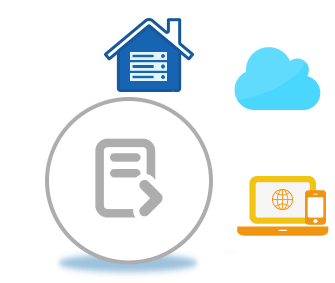Merge XLTM Documents Online via Merger App or using C++
Develop powerful C++ based XLTM document merging application. Combine multiple XLTM documents into single one online for free via app. Save merged XLTM file as PDF, Images, Word, Excel, PowerPoint & many other formats online.
Merge XLTM Files Online using App
- Upload XLTM files to merge them into single one
- Enter the parameters like selection from dropdown
- Save to required format: XLSX, PPTX, PDF, DOCX, DOC, Image, HTML, and others
- Click the “Merge” button to Merge XLTM into desired format
- Download the merged XLTM file
- View and get the single merged XLTM file
Merge XLTM File via C++
- Load both XLTM using Workbook objects.
- Select the one Workbook as the base file.
- Use Combine method using base obect and second XLTM file object as parameter.
- Call Save method and get the merged XLTM files into one.
C++ Code: Merge XLTM Spreadsheets
Develop XLTM File Merger using C++
Need to develop C++ utility app to easily merge multiple XLTM files? With
Aspose.Cells for C++
, child API of
Aspose.Total for C++
, any C++ developer can integrate the above API code to concatenate documents easily. Powerful C++ library for merging documents supports many popular formats including XLTM format.
C++ Merging Library for XLTM Files
There are options to install Aspose.Cells for C++ or Aspose.Total for C++ onto your system. Please choose one that resembles your needs and follow the step-by-step instructions:
- Install a NuGet Package . See Documentation
- Install the library using Package Manager Console within Visual Studio IDE
System Requirements
You can use this C++ library to develop software on Microsoft Windows, Linux and macOS operating systems:
- GCC >= 7.5.0 and Clang >= 3.9.1 are required for Linux
- Xcode >= 12.5.1, Clang and libc++ are required for macOS
If you develop software for Linux or macOS, please check information on additional library dependencies (fontconfig and mesa-glu open-source packages) in [Product Documentation](https://docs.aspose.com/cells/cpp/system-requirements/).
FAQs
- Can I use above C++ code in my application?Yes, you are welcome to download this code. One can develop professional solution to combine XLTM using C++. Use XLTM merging API to develop high-level, platform independent software in C++.
- Is this document merging App work only on Windows?You have the flexibility to initiate document merging from any device, irrespective of the operating system it runs on, whether it be Windows, Linux, Mac OS, or Android. All that's required is a contemporary web browser and an active internet connection.
- Is it safe to use the online app to combine multiple XLTM documents?Of course! The output files generated through our service will be securely and automatically removed from our servers within a 24-hour timeframe. As a result, the download links associated with these files will cease to be functional after this period.
- What browser should to use App?You can use any modern web browser like Google Chrome, Firefox, Opera, or Safari for online XLTM document merging.
- How can I merge multiple XLTM files?Start by uploading one or more files you want to merge. You can either drag and drop your XLTM files or simply click inside the white area. Afterward, click the 'Merge' button, and our merger will quickly process the uploaded files.
- How long does it take to merge the XLTM files?This merging application operates quickly, It may take a few seconds to upload the files and merge them.
Explore File Merger Options with C++
What is XLTM File Format?
The XLTM file format, also known as an Excel Macro-Enabled Template file, is a file format used in Microsoft Office Excel to store spreadsheet templates that contain macros. Introduced in Excel 2007, this file format is based on the Microsoft Excel Open XML Format Spreadsheet.
XLTM files serve as a convenient way to save macros written in Visual Basic for Applications (VBA) within a spreadsheet. Macros are sets of instructions that automate tasks in Excel. Similar to the XLSM file format, XLTM files can store macros; however, they have an additional feature: the ability to be used as templates for other Excel files.
When an XLTM template is used to create a new workbook, the macros from the template are copied into the new file. This allows users to execute the macros within the newly created workbook. This feature is particularly useful for creating reusable templates. For example, a template could be designed with macros that generate a monthly report. By using the XLTM template each month, a new workbook is created with the macros automatically generating the report based on the data in the workbook.
XLTM files are also valuable for sharing macros with others. A user can create a template with macros, such as a report generation template, and then send it via email to another user. The recipient can open the template in Excel and utilize the macros to generate the desired report.




